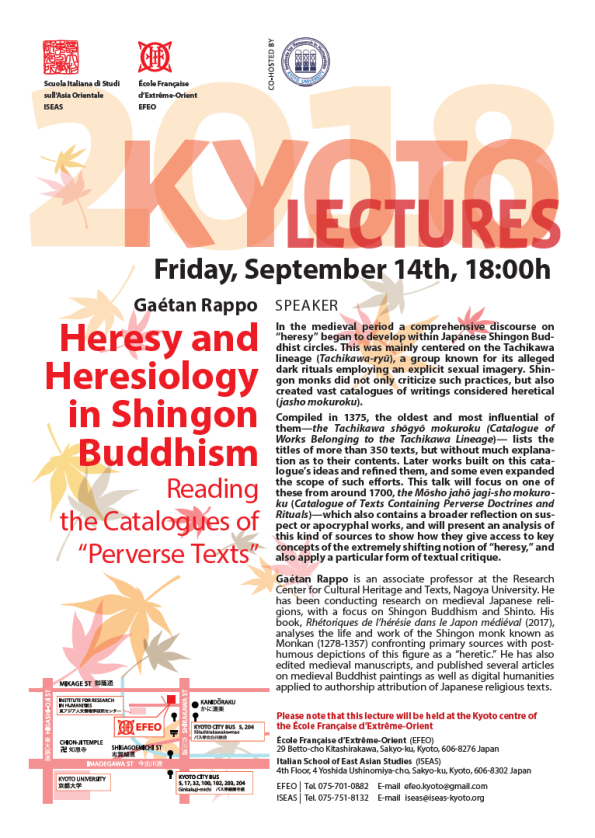In the medieval period a comprehensive discourse on“heresy” began to develop within Japanese Shingon Buddhistcircles. This was mainly centered on the Tachikawalineage (Tachikawa-ryu), a group known for its allegeddark rituals employing an explicit sexual imagery. Shingonmonks did not only criticize such practices, but alsocreated vast catalogues of writings considered heretical(jasho mokuroku).
Compiled in 1375, the oldest and most in uential ofthem?the Tachikawa shogyo mokuroku (Catalogue ofWorks Belonging to the Tachikawa Lineage)? lists thetitles of more than 350 texts, but without much explanationas to their contents. Later works built on this catalogue’sideas and re ned them, and some even expandedthe scope of such efforts. This talk will focus on one ofthese from around 1700, the Mosho jaho jagi-sho mokuroku(Catalogue of Texts Containing Perverse Doctrines andRituals) – which also contains a broader reflection on suspector apocryphal works, and will present an analysis ofthis kind of sources to show how they give access to keyconcepts of the extremely shifting notion of “heresy,” andalso apply a particular form of textual critique.
Please refer to the attached document.
Friday, September 14th, 18:00h
Please note that this lecture will be held at the Kyoto centre of the École Française d’Extrême-Orient.

